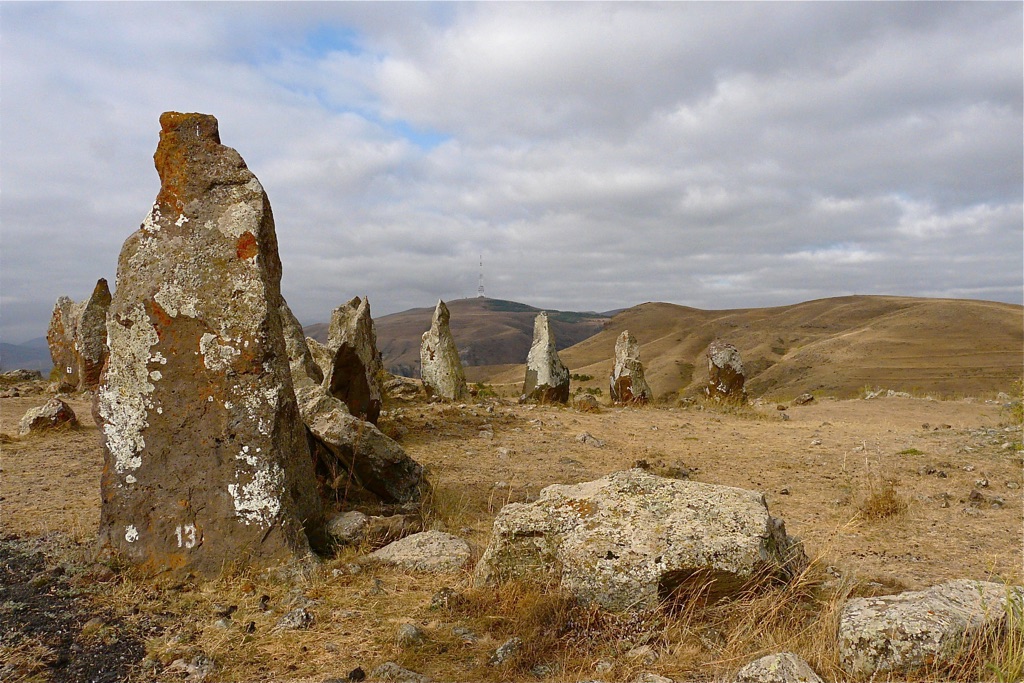Summary
Unveiling Carahunge’s Mysteries
Carahunge, often referred to as the Stonehenge of Armenia, captivates visitors with its ancient stones. This prehistoric complex boasts over 200 massive boulders, some reaching up to three meters in height. The true purpose of this site stirs intrigue as theories suggest it served as an astronomical observatory. Each stone precisely angled, researchers believe they align with celestial bodies. This theory is bolstered by the discovery of smooth, angled holes in certain stones. These clues point towards a sophisticated understanding of astronomy by ancient civilizations.
Get your dose of History via Email
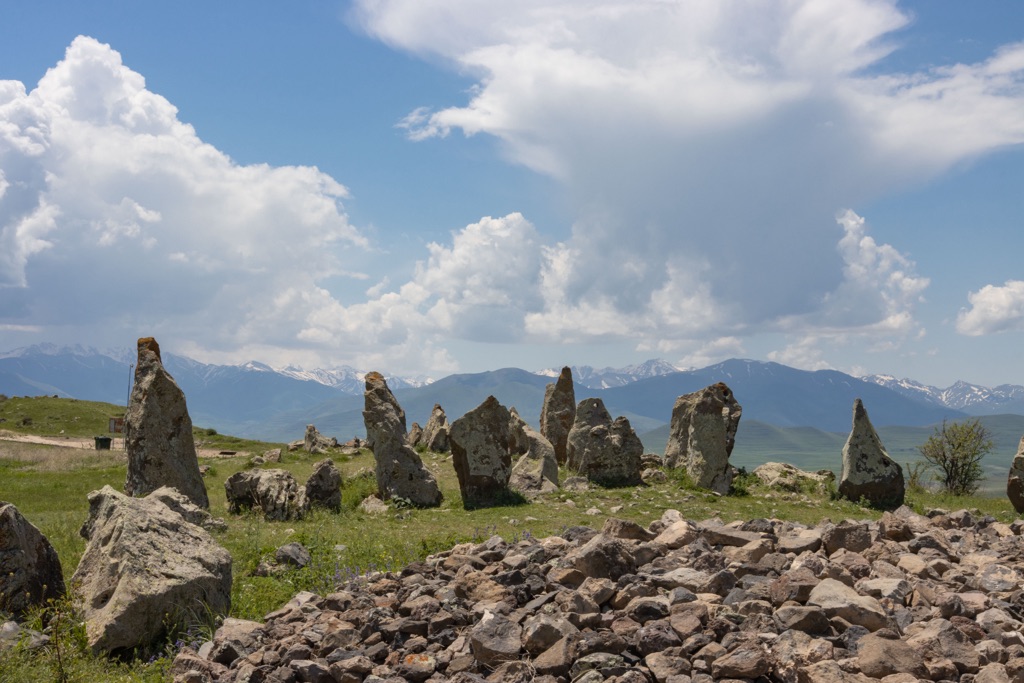
Carahunge’s Cultural and Historical Significance
The age of Carahunge remains a subject of debate, with estimates suggesting it could be over 7,500 years old. This makes it potentially older than the renowned Stonehenge. Its Armenian name, Karahunj or Zorats Karer, translates to ‘Speaking Stones’. This speaks to its historical importance in local lore. A place of pilgrimage for both locals and tourists alike, it stands as a testament to Armenia’s rich past. It’s an emblematic symbol of the region’s ancient culture and long-standing traditions. Each visit to Carahunge promises a journey back in time and a chance to gaze upon the same stars our ancestors marvelled at millennia ago.
Experiencing the Wonders of Carahunge
When one walks among the weathered stones of Carahunge, there’s a profound connection to history. It’s more than an archaeological site; it’s a place for reflection and wonder. Visitors can immerse themselves in the mystery and beauty of this unique location. The setting among the rugged Armenian highlands adds to the allure. Carahunge continues to draw the curious and the scholarly from around the world. They all seek to uncover its secrets and experience the magic of this enchanting historical jewel for themselves.
Historical Background of Carahunge
The Origins of Carahunge
Carahunge, nestled among the rolling highlands of Armenia, is a marvel of ancient engineering. This stone complex dates back to a time that predates much of recorded history. Researchers suggest Carahunge could be over 7,500 years old. If true, this makes it older than Britain’s Stonehenge. Its origins steeped in mystery, the site features over 200 stones lined up across a vast expanse of land. Each stone tower stands as a silent witness to millennia of history, weathering the elements and keeping guard like timeless sentinels.
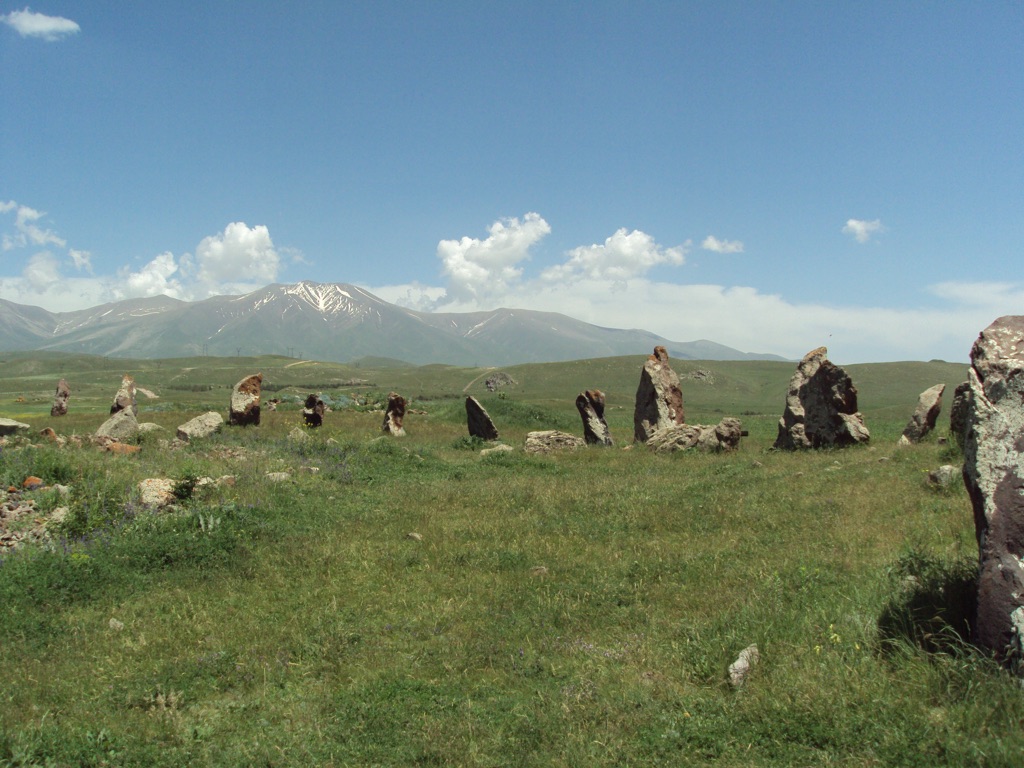
Astronomical Significance
Evidence points to Carahunge having been an astronomical observatory. The stones have intentional slits and angles facing the sky. Experts have linked these features to observing celestial events. These align with movements of the sun, moon, and stars across seasons. Such astronomical precision reveals the advanced knowledge of the site’s ancient architects. It showcases their deep connection with the cosmos. It shows how they harnessed this connection for practical and possibly spiritual purposes.
Carahunge holds a significant place in Armenian culture. Its local name, Zorats Karer, means ‘Army Stones’ or ‘Stones of the Powerful’. This hints at its importance in local lore and perhaps military history. Stories and traditions have woven themselves around the stones, further enriching the site’s cultural tapestry. A crossroads of folklore and history, Carahunge continues to intrigue and inspire those who visit.
Legends and Interpretations
The stones of Carahunge have ignited the imaginations of many. Legends abound, with some seeing it as a place of ancient worship or a sacred burial ground. Others interpret it as a prehistoric star map or a complex calculator for agricultural cycles. The varied theories reflect human curiosity and the desire to make sense of the enigmatic. Moreover, they embody the power of Carahunge to fuel endless speculation and fascination.
Today, Carahunge attracts visitors from all over the globe. They come seeking to unlock its secrets or simply bask in its atmospheric presence. The site provides a tangible link to our prehistoric ancestors. It invites modern explorers to ponder the achievements of civilizations long past. Amidst the whispers of the ‘Speaking Stones’, one can’t help but feel connected to the rich tapestry of human endeavor.
The Discovery of Carahunge
Unearthing the Prehistoric Wonder
Carahunge, Armenia’s stone marvel, first caught the attention of scholars in the 20th century. Despite its ancient history, it was not until recent times that its significance emerged. It was Paris Herouni, an Armenian physicist, who put Carahunge on the scientific map. In the late 1990s, his research brought the site international acclaim. He proposed a link between the stones and astronomical observation, sparking global interest.
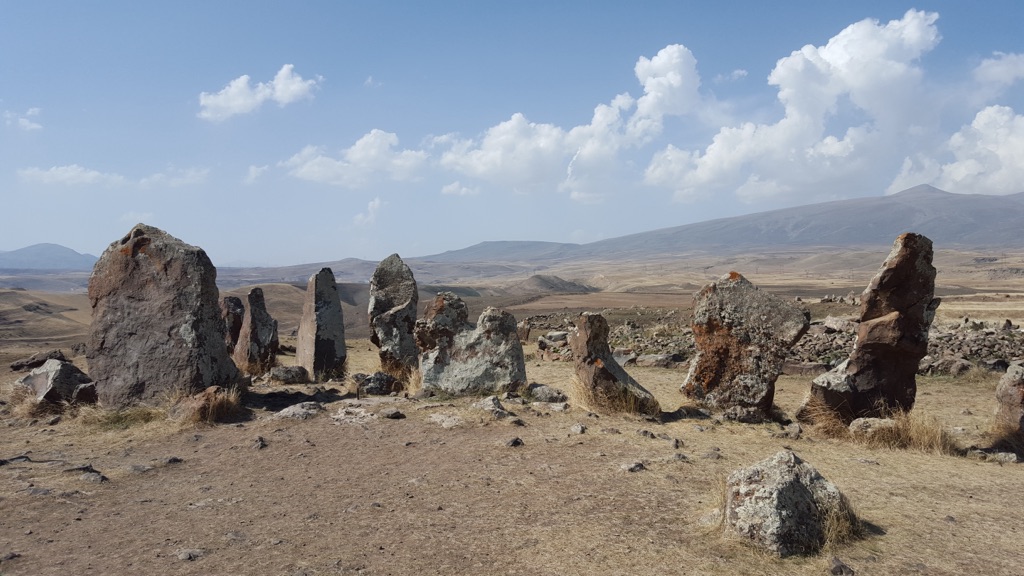
Paris Herouni’s Contributions
Paris Herouni’s passion for Armenian heritage drove his discovery process. He conducted detailed measurements and investigations of Carahunge. Herouni’s work suggested the site was an ancient observatory. He published these findings, which attracted archaeologists and historians alike. His pioneering studies laid the groundwork for further exploration of the site’s history and purpose.
After Herouni’s discovery, others took note of Carahunge’s potential. Teams of archaeologists and astronomers delved deeper into the site’s mysteries. They used modern technology to uncover its secrets. Excavations and surveys soon followed, shedding light on Carahunge’s construction and possible uses.
Deciphering Ancient Alignments
Researchers found many of the stones had small holes carved into them. These holes pointed at the horizon, aligning with the positions of the sun and moon at solstices and equinoxes. This supported Herouni’s theory of Carahunge being an observatory. The sheer scale and complexity of the site astounded the scientific community. Further studies continue to hint at its astronomical significance, enriching our understanding of ancient cultures.
Today, Carahunge stands as a testament to Armenia’s historical depth. Its discovery has spurred numerous research initiatives. It garners increasing recognition as a significant archaeological and astronomical site. The public, too, became more aware of Carahunge’s importance. The stones of this Armenian wonder continue to attract both the curious and the scholarly. They come seeking insights into the knowledge and practices of an ancient, yet sophisticated, society.
Cultural Significance, Dating Methods, Theories and Interpretations
Imbuing Cultural Identity
Carahunge is not merely an archaeological site; it is a cultural touchstone for the Armenian people. It embodies their enduring heritage and underscores Armenia’s presence in ancient history. The stones serve as a focal point for national pride and are a symbol of Armenian ingenuity. Festivals and events are often held there, celebrating both the past and the present, and uniting the community in appreciation of their deep-rooted culture.

Challenges in Dating Carahunge
The dating of Carahunge has been a pivotal element in understanding its importance. Techniques like radiocarbon dating and thermoluminescence have been employed. These seek to clarify the timeline of its existence. Archaeologists have found artifacts and organic materials near the site to aid in this quest. Despite these efforts, accurate dating remains elusive. The site’s age is estimated to range from 7,500 to possibly even 12,000 years, making it one of the most ancient on record.
Several theories have been proposed to interpret Carahunge’s purpose. Some suggest it played a role in religious ceremonies or acted as a celestial calendar. Others see it as a complex built for navigation or territorial claim. The variety of carved holes and angles in the stones guide many of these theories. However, without definitive evidence, the true purpose of Carahunge continues to captivate and mystify scholars and enthusiasts alike.
Diverse Theories and Interpretations
The dominant theory positions Carahunge as an ancient observatory, due to the alignment of stones with astronomical phenomena. This suggests a society with highly advanced knowledge of the stars and their patterns. Other theories point to ritualistic uses or as markers for significant seasonal events. The interpretations are many, each adding layers to our understanding of this enigmatic site.
The stones of Carahunge, with their precise placements and alignments, leave a rich field for interpretation. As researchers continue to explore and test various theories, our understanding of this historic site will undoubtedly evolve. In this evolution lies the beauty of Carahunge; its story is not static but unfolds with each new discovery. For now, it stands as a provocative canvas, inviting both scholarly debate and the public’s imagination.
Conclusion and Sources
Carahunge remains one of the most compelling archaeological sites from the prehistoric era, beckoning scholars and tourists to its storied stones. Its vast cultural significance and the mystery of its origins and functions hold a particularly resonant place in Armenian heritage. While much has been theorized about Carahunge’s alignments and potential as an ancient observatory, definitive conclusions continue to elude us. The site demands continued research and study, where each discovery adds a new piece to the historical puzzle of human civilization. Carahunge stands as a testament to the astronomical prowess and the cultural complexity of a people long gone, offering us a deepened appreciation for the ingenuity of ancient societies. Its true purpose may remain a matter of conjecture, but what is certain is its enduring legacy as a treasure of human history and a symbol of Armenian pride.
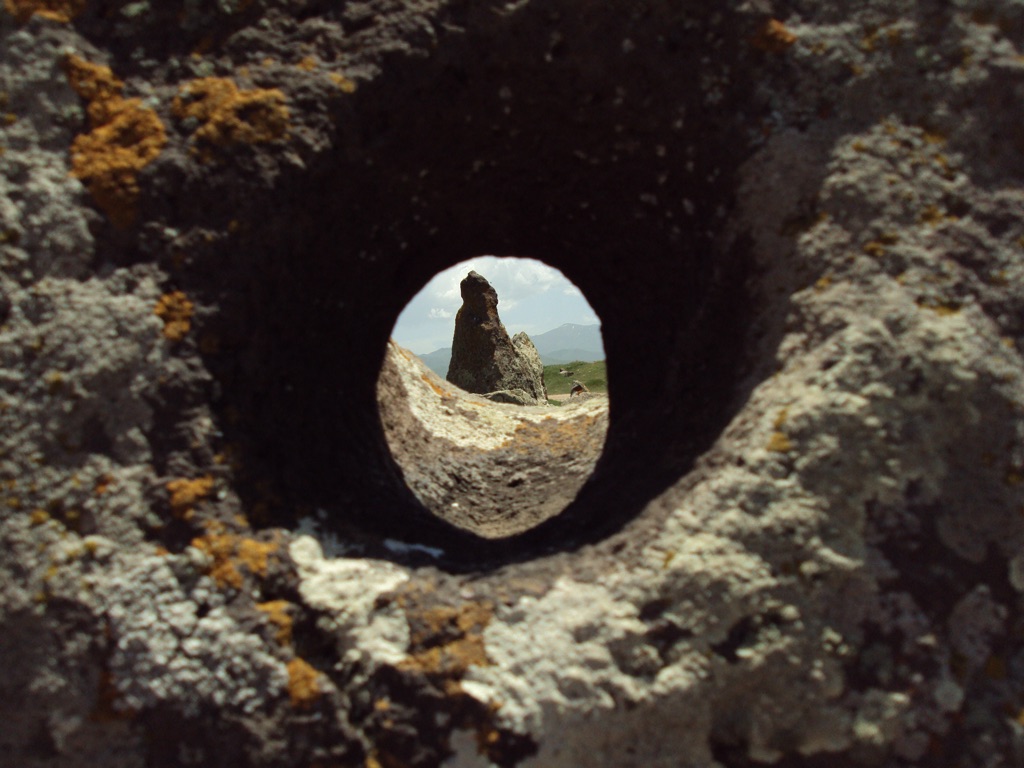
For further reading and to validate the information presented in this article, the following sources are recommended:
Or you can check any of these reputable archaeological and historical texts:
Tokhatyan, K., & Zohrabyan, L. (2015). ‘Revisiting Carahunge: A Stone Colossus in Armenia’. Journal of Astronomy & Earth Sciences, 3(1), 55-67.
Herouni, P. (2004). ‘Armenians and Old Armenia: Archaeoastronomy, linguistics, oldest history’. Tigran Metz Publishing.
Magli, G. (2016). ‘Archaeoastronomy: Introduction to the Science of Stars and Stones’. Springer, 101-103.
Yesayan, H., & Balter, M. (2018). ‘Rock of Ages: Science in Armenia’s Stone Henge’. Science, 362(6418), 982-985.
Parsamian, E. S. (1999). ‘Ancient Astronomy of Armenia’. Astrofizika, 42, 81-94.

